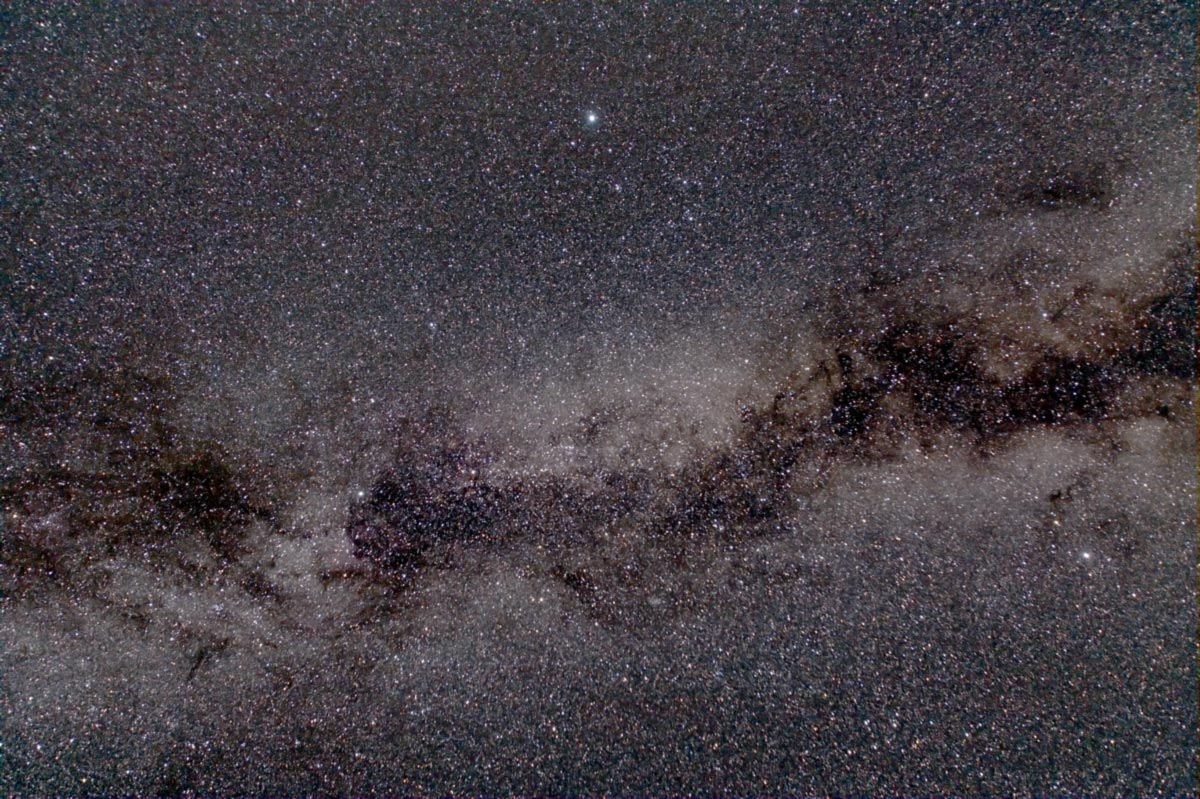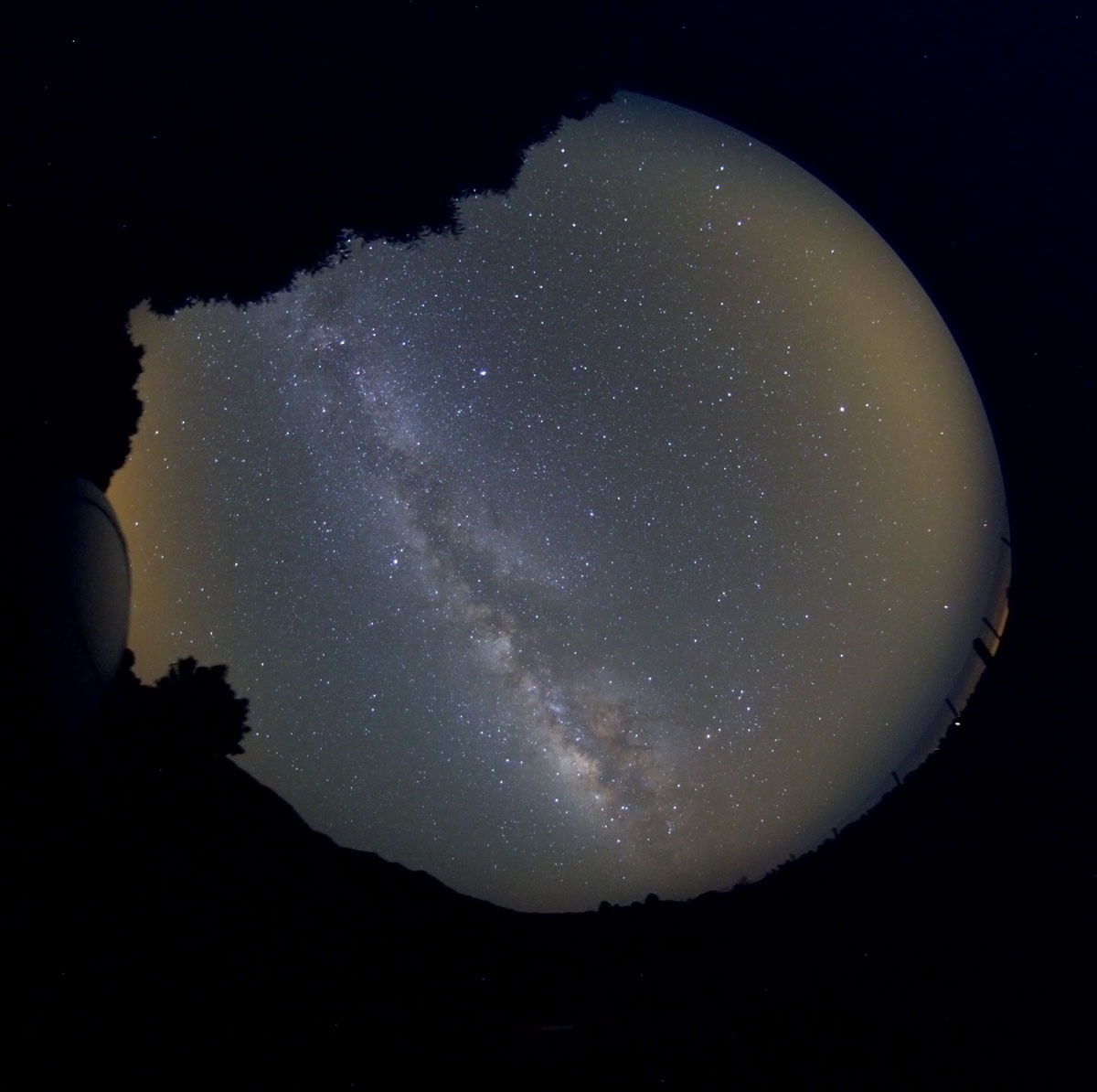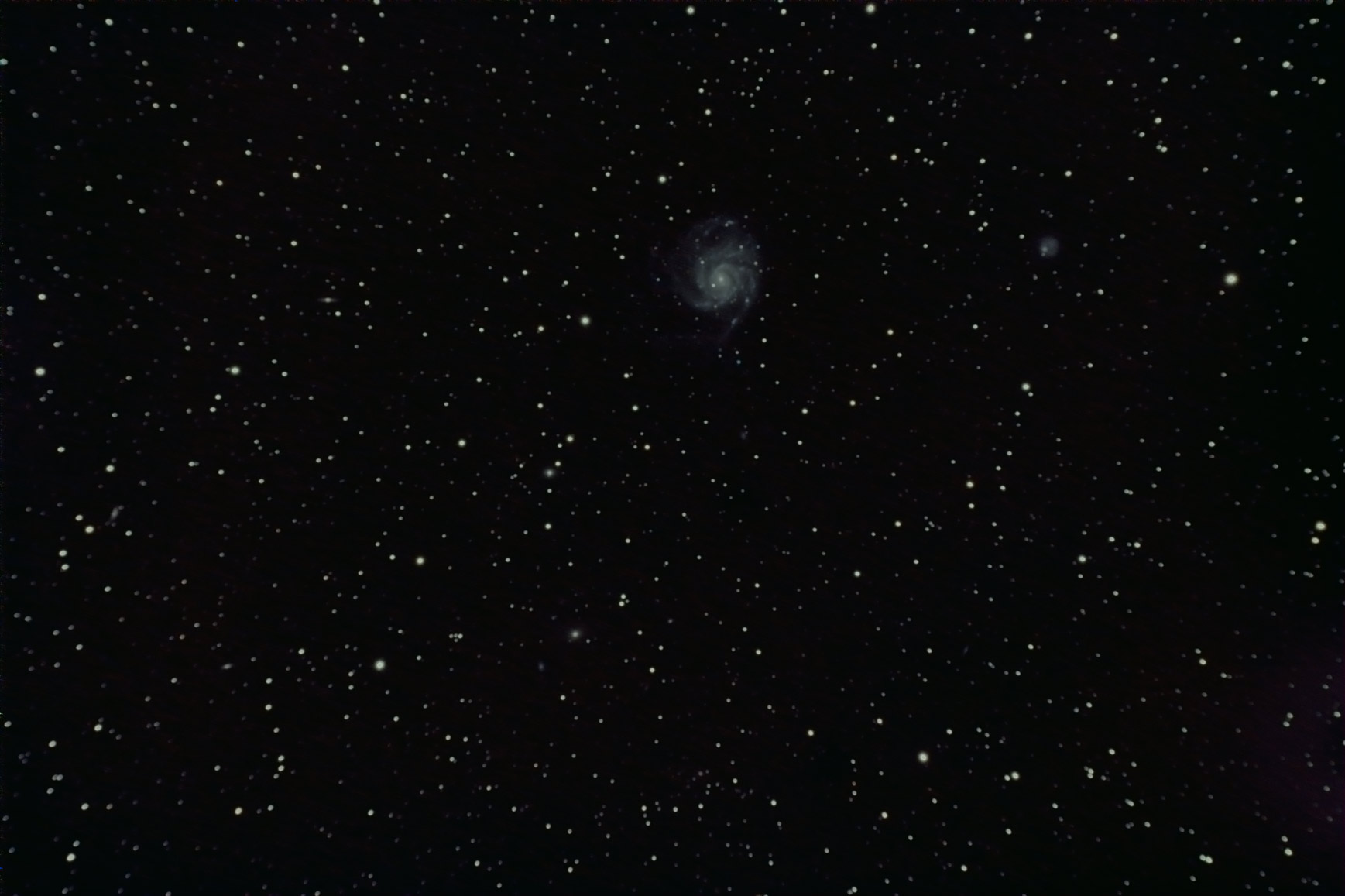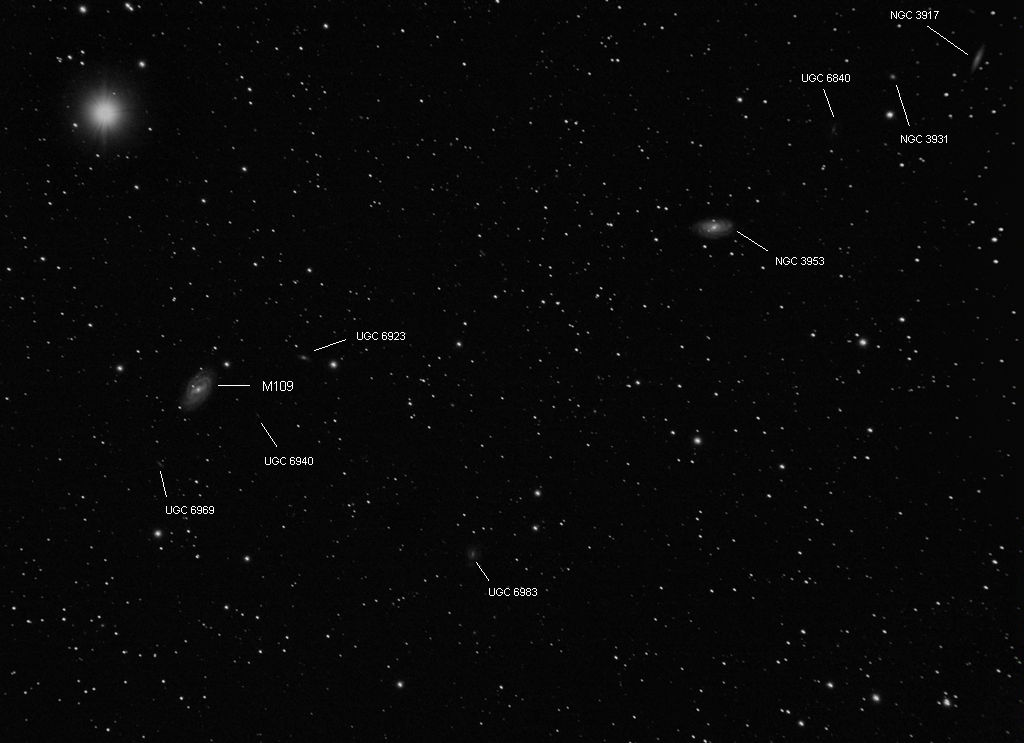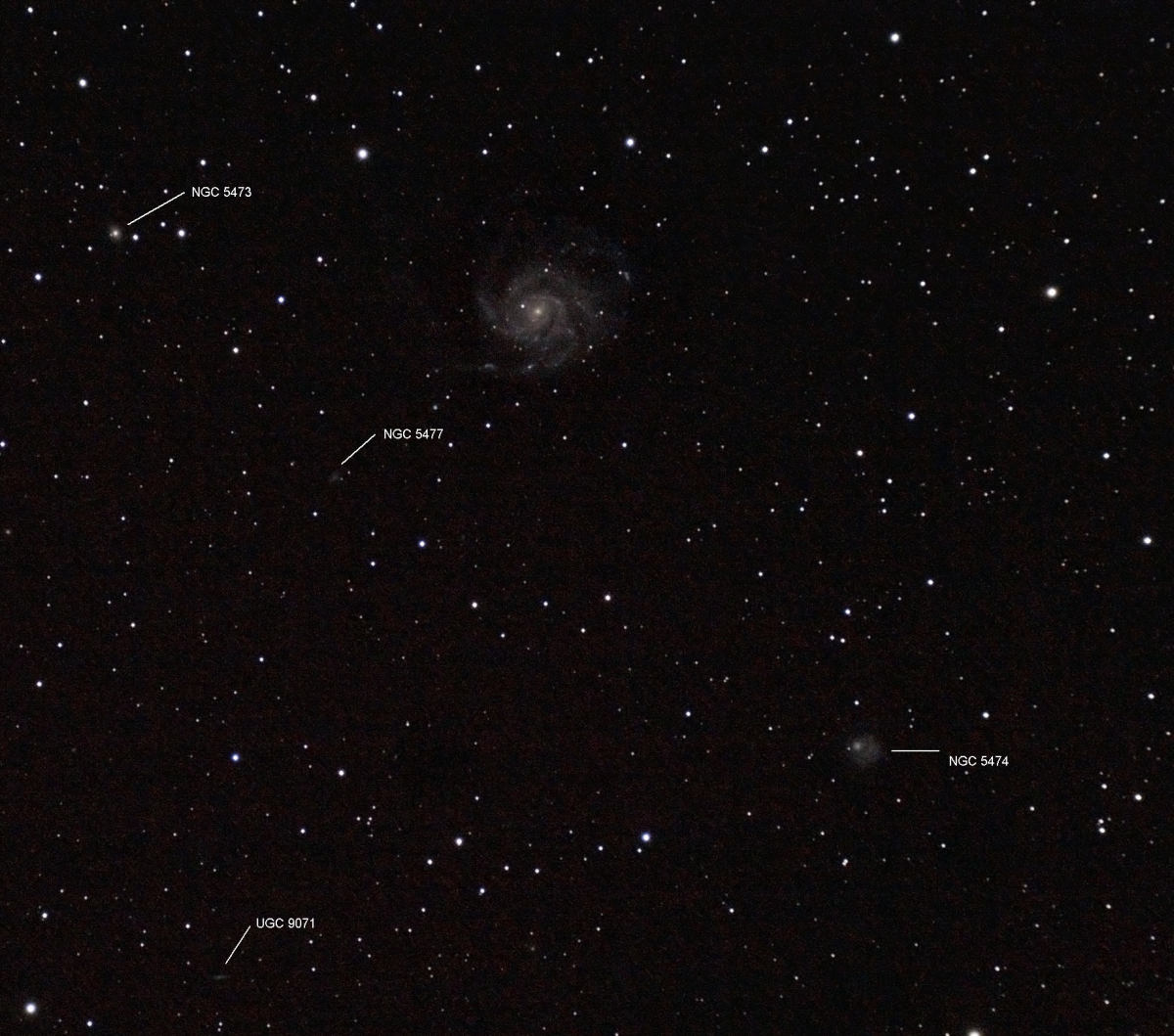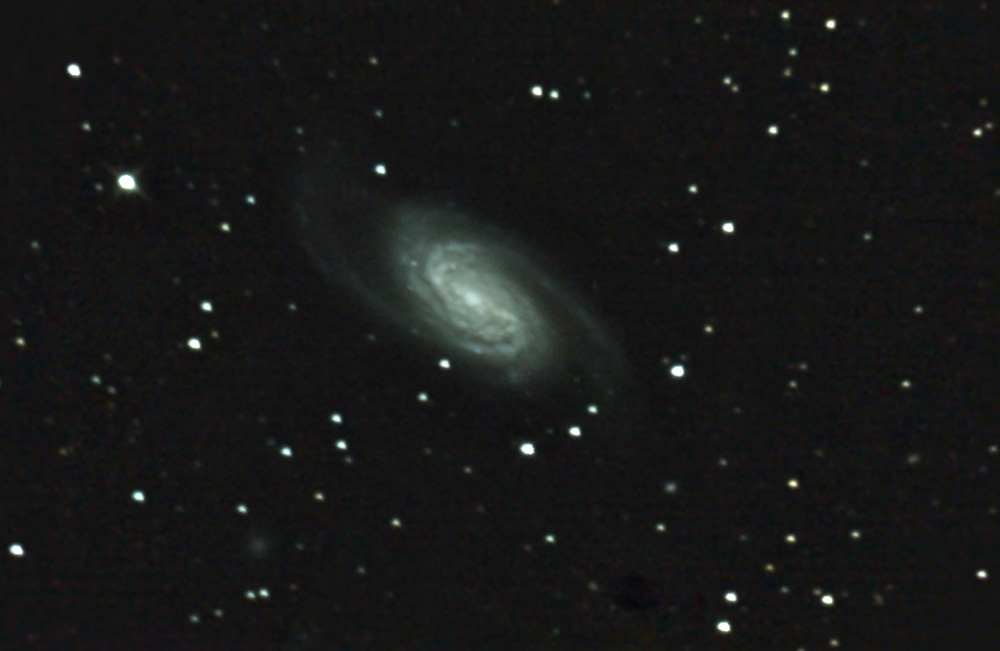One of the surprising things about the night sky is the number of galaxies out there that can be photographed with a humble 70mm refractor and Canon DSLR camera. With my last few outings concentrating on Ursa Major for this clear night I decided upon the Virgo cluster and the Markarian Chain.
The Virgo galaxy cluster contains upwards of 1200 galaxies and it’s centre is 53 million light years away. Together with the Local Group it forms a small part of the Local or Virgo Supercluster.
The Markarian Chain is named after the astrophysicist who first noticed their common motion in the 1970s.
Imaging these galaxies was surprisingly difficult after the large spirals in Ursa Major. Being further away, they’re smaller and fainter and there’s a lack of bright stars in the near vicinity which makes locating them harder. Fainter means that more exposure is required to bring them up out of the background noise. Being close to the Celestial Equator also means that the polar alignment is rather more critical than I’ve become used to. While I did make a correction to the mount after the first couple of images it still required more refinement.
For these images I put the focal reducing William Optics field flattener on the camera and to compensate for the increased photographic speed of this combination reduced the exposure time to 4 minutes per frame. The focal length is reduced to 336mm. I’m not entirely happy with how this focal reducer works just yet; some more experimentation is required. It may be that it isn’t an ideal combination with this telescope.

I’m not going to even try and label all the galaxies in this image.
Telescope: WO 70mm Zenithstar with FF3
Camera: Canon 350D
Frames: 18x 240 second

